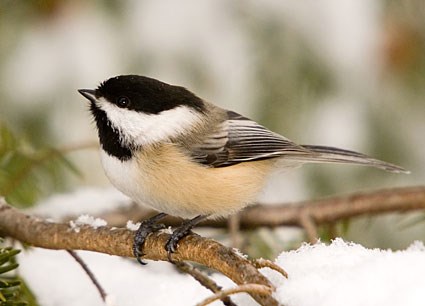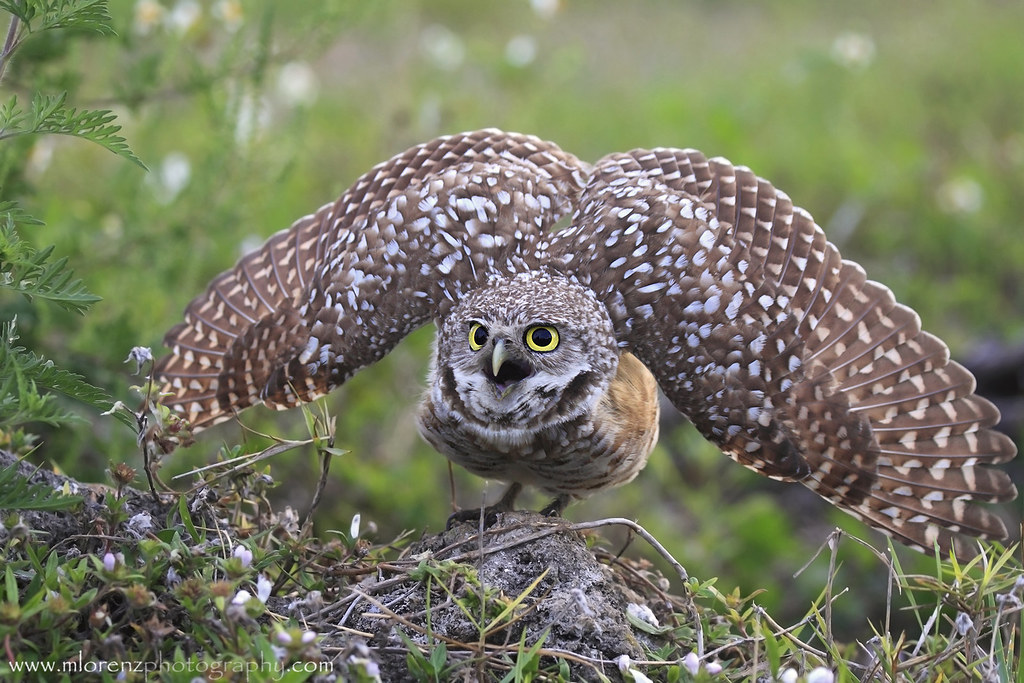Did you know that birds can be quite fierce? Hummingbirds are well-loved by many birders for their beauty and their ability to hover around flower gardens. Many hummingbirds are just over 3 inches, yet will aggressively chase off birds much larger than them. Blackbirds, chickadees, and swallows often dive-bomb other birds larger than them as well. Then you have the raptors (not the Jurassic Park kind) who will even attack humans! Why do these birds act like this? Do they have a hero complex? Are they training for starling wars? All these questions may or may not be answered in this blog, as I take a look at some angry birds. No happy birds allowed!

Am I happy? Or angry?
The main character of the Angry Birds app is almost certainly based on a cardinal. Male cardinals are bright red, have a wonderful song repertoire, and are often featured on Christmas cards. Females are brown, with an occasional dash of red. Many birders enjoy seeing these birds, but researchers who have dealt with cardinals up close often have a different attitude. In order to track individuals and populations, researchers will often catch and band birds. A small metal or plastic band is placed around a bird’s tarsus that will uniquely identify the bird if it is caught again. If the bird is captured again at another site, or even the same site, the information about movements and inferences about habitat use can prove to be valuable. Measurements such as wing length and weight are also recorded. Some birds will stay calm when captured, others squirm and make some noise. Then you have cardinals. Cardinals are the bane of a bander’s existence. They will often scream incessantly when in the hand and will usually attempt to bite the handler. They have a large beak for cracking seeds, which can also be used to cause pain to human hands. While assisting with a banding project this past summer, I managed to handle 5 cardinals without incident before getting bit by an angry youngster. I glared at him and threatened to feed him to a Red-tailed Hawk. He responded by piercing my eardrums with his screaming. Anyway, I’m planning on developing a new TV show about a pair of birds who plan revenge after being betrayed in the political arena. It’s called House of Cardinals.


The cardinals are not impressed with my pun.
Another angry bird is the chickadee. Chickadees are often appreciated for their playful personality and their frequent appearances at backyard feeders. They often will act as acrobats, hanging upside-down on tree branches or while extracting seeds from a pine cone. Chickadees are quite active and very vocal. In fact, research has revealed evidence that chickadees may convey the danger level of a potential predator by varying the number of “dees” in their calls! They are also little devils. When in the hand, they often try to hammer your hand with their bill. The good news is that they are so small, that the hammering actually tickles. I’m just glad there aren’t any chickadees the size of a turkey, because the hammering would probably rip a hole in my hand.


Photo on left © Jerry Acton, February 2007. Photo on right © Mark Davis.
Next up are hummingbirds. I once spent hours watching Ruby-throated Hummingbirds duel for prime positions at a sugar feeder. With an average length of around 8 cm and a weight between 3-6 grams, these fiesty birds are quite the fighters. Individuals often spend a lot of time chasing away potential rivals. Sometimes this leads to a chasing cycle, where one hummingbird, we’ll call her Anna, leaves her perch on a feeder to pursue a rival. While Anna is busy, a male swoops in to sip some food. Anna sees the newcomer and chases him away from the feeder. Meanwhile, the first female Anna chase away comes back and . . . well, you get the idea! Hummingbirds will often dive-bomb larger birds and even people, usually to protect their territory or defend their young. Their aggressiveness is probably key to their survival as tiny members of the avian world. On a final note, though bulls are often associated with becoming enraged by the color red, the truth is they are usually color-blind. However, hummingbirds are attracted to bright colors such as red and pink. I even had hummingbirds almost fly into my face when wearing a red shirt or holding a pink squirt gun!


Left – Male Ruby-throated Hummingbird. Right – Blue-capped Hummingbird.
There are more angry birds to talk about in my next post, but for now, I’ll leave you with some pictures of angry owls. As you spend time outdoors this week, watch out for the birds. You never know when one might want to bite your face or redecorate your deck. Stay away from people who show you an angry bird. Finally, you should bet your life savings on the Louisville Cardinals to win the College Football Playoffs and the Arizona Cardinals to win the Super Bowl. Don’t mess with cardinals!

Left – Burrowing Owls may display when threatened. Right – Great Horned Owl from National Geographic.
The Anna’s hummingbirds around my house are assholes: Gorgeous, skillful little assholes. I’ve got three large feeders spaced at least twenty feet apart and still, the carnage….
Ah, I remember seeing Anna’s hummingbirds years ago in California. Unfortunately, we only have Ruby-throated where I live.